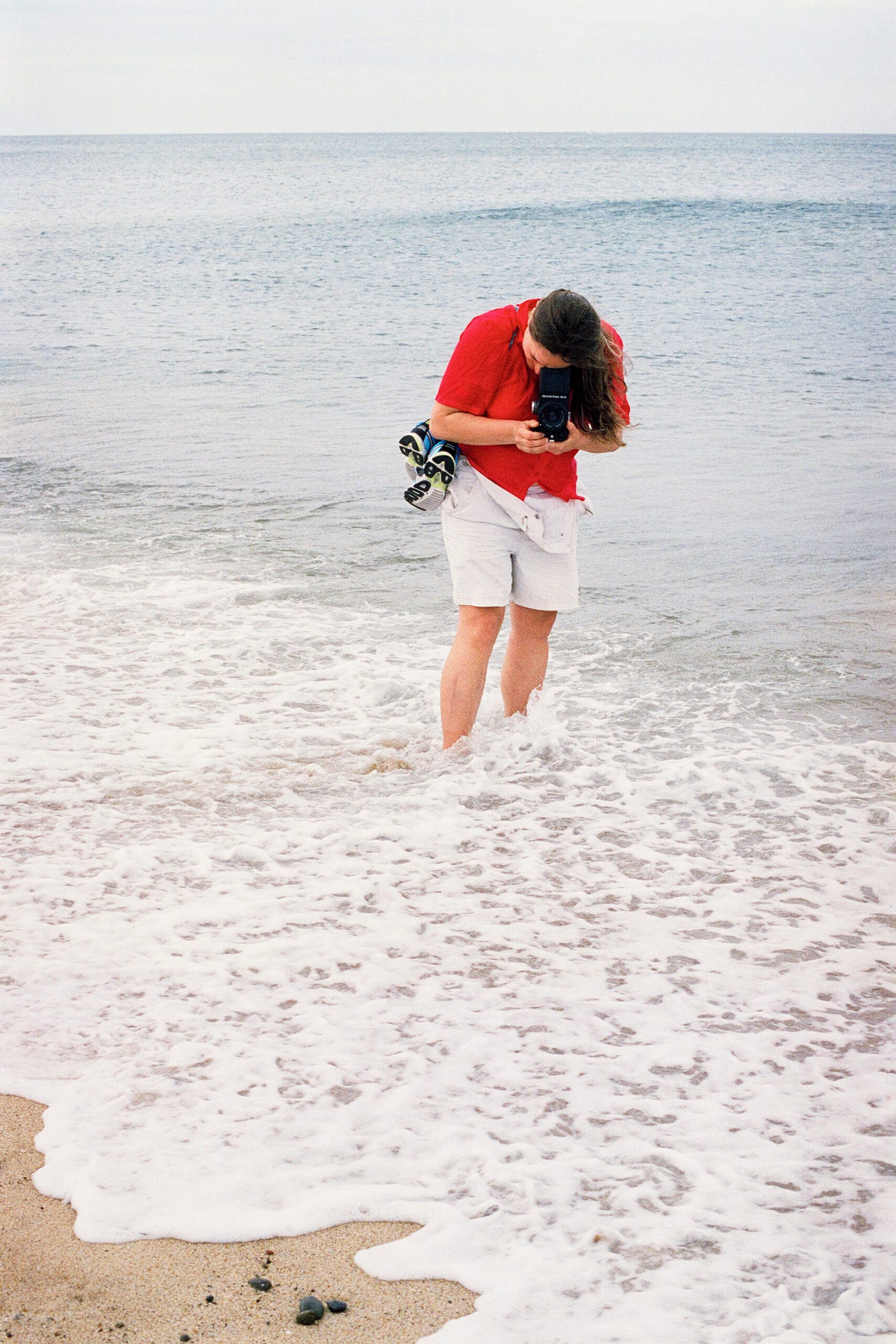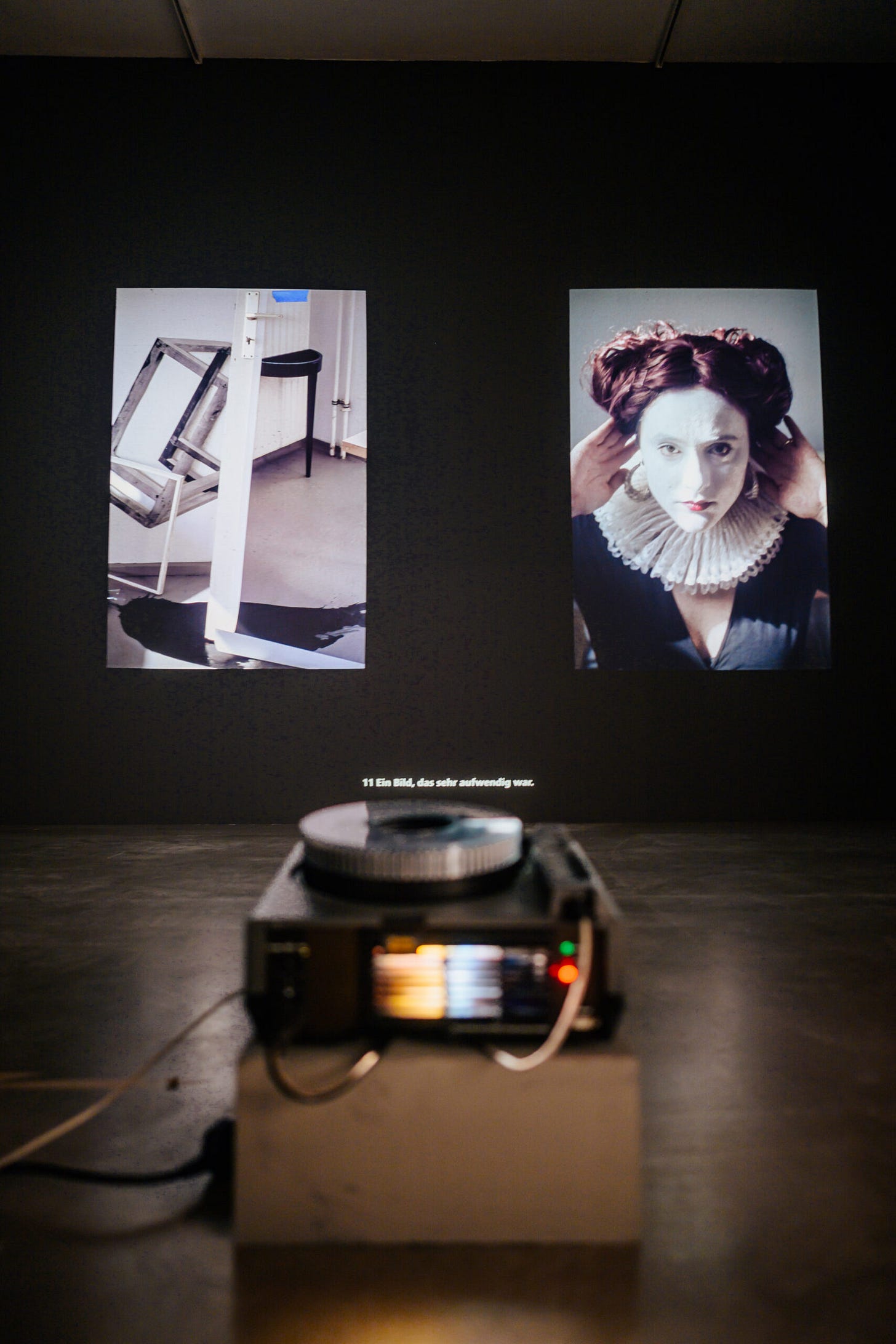A Photographic Friendship Across A Century: Kathrin Sonntag & Gabriele Münter at Marta Herford
A show that I almost skipped on my tight schedule turned out to be one of the most moving this year.
A Last Minute Visit
I was at Marta Herford to see the Hybrid Painting exhibit before it closed, rushing to visit both venues. I was ready to leave for Bielefeld but noticed a second exhibition upstairs. I squinted my eyes from downstairs to read the title: Something about the expressionist painter Gabriele Münter (1877-1962, German). Aight, I thought. I’ll give it a quick look before heading out.
Let me tell you: I was in awe. What I expected to be another classical show on Gabriele’s painting turned out to be a contemporary take on her photography. I didn’t even know she used to take pictures. The museum invited Kathrin Sonntag (Millennial, German) to present 43 of her own works together with 51 pictures taken by Gabriele around 1900. Herford is where Gabriele’s family was from, and it’s beautiful to see the institution presenting her lesser-known work for the first time. Later, I learned that the two artists have more in common than just photography: Kathrin and Gabriele were both born in Berlin, almost 100 years apart. So what does their time-traveling collab look like?
Seeing You, Seeing Me
Kathrin was entrusted with the whole design of the exhibition. For the walls, she created a color concept inspired by Gabriele’s painting palette. The treatment of size and scale is playful: Flat floor-to-ceiling shots by Kathrin meet delicate protruding square formats by Gabriele, sometimes layered, sometimes neighboring, sometimes eye-to-eye in size.
The first work I see is a life-sized picture Kathrin took of Nina at the Beach (2012) who’s holding a camera herself. Next to it, Gabriele at the beach in early summer 1904, a photograph her partner Wassily Kandinsky (1866-1944, Russian) took. I love how the visual combination suggests that it was actually Nina who stood in front of Gabriele and snapped the shot. Several pictures look like they were taken across timelines, friends portraying friends. Kathrin captured Anna taking a picture (or making a video) with her phone in Seefeld, Germany, in 2023. Standing on a field, Anna looks as if she’s photographing the Three girls on a meadow in Marshall, Texas in 1899/1900.
10 years ago, Kathrin also photographed Sarah in Seefeld: she’s squinting at the glaring sun while holding a cigarette in her hand. Next to her is Gabriele’s pic of a Woman at a lake supposedly at Forest Park in St. Louis (1900). You know what they’ve got in common? In both pics, you see the photographer’s shadow. Especially looking at Gabriele’s, I feel like it’s a signature, the shadow feels like her saying I was here. I made this. It’s probably not that deep and I’m just approaching this from my feminist art history standing, but I love the way you can see the dress in the silhouette: This isn’t just another man’s gaze. It’s a woman seeing another woman.

I must admit that I don’t get behind every pairing in the show. Some combinations left me wondering how they related to each other even after taking a good while to examine them. But most were understandable. There’s so much joy radiating from Ella, Ida, and Minnie splashing in a pond in Moorefield, Arkansas in 1899/1900. They must have felt like mermaids, just like the painted wooden mermaid sculpture Kathrin photographed in a German seafood restaurant last year. I can’t stop smiling thinking about this.
In 1900, Gabriele captured a cockfight in St. Louis, the guys mischievously grinning at the camera while holding the poor birds. Kathrin paired this one with a pic of a black pigeon resting on a chair. I’m thinking back to my summers in Venice. Back in 2021, I was on a lunch break between doing my tours and a pigeon flew to my table to sit on the chair across from me. I was anxiously chewing on my Focaccia, worried that it’d fly over to snatch a piece. But it patiently waited for me to offer some crumbs. So I had an unexpected pigeon date for a couple minutes. That was the only time this happened to me. I look up the title: Pigeon, Venice, Italy 2019. Ain’t no fucking way…
Later, Kathrin layered Gabriele’s portrait of Mrs. Allen in her living room in Marshall, Texas (1900) over an old weathered garden sculpture. Mrs. Allen’s white dress mimics the sculpted fabric folds of the statue. The pairing makes me focus on her wrinkles even though she’s smiling. I can’t help but think about death. Turns out the sculpture is one of those in Venice’s Napoleonic Gardens. No wonder I like this one so much! How didn’t I recognize it right away?
Passing the Bechdel Test
Another room in the back features the collaborative work Ein Bild [One Picture] (2015) by Kathrin and fellow artist Nina Hoffmann (Millennial, German). 243 dias are projected onto a wall. Corresponding to 81 prompts, each artist picked one fitting picture from their respective archives. Kathrin’s are on the left and Nina’s on the right. Maybe the pictures aren’t that intriguing on their own, but the vulnerability revealed in their selection moved me to tears: 15. A picture I took for you; 25. A picture I have thought about a lot; 30. A picture I believe has no potential; 34. A picture I wasn’t allowed to take; 35. A picture that makes no sense; 41. A picture that hurts me to look at; 58. A picture that makes the situation look more sad than it was; 69. A picture that sparked joy.
Kathrin and Nina don’t play into the idea of artistic genius, suggesting that every breath they take is on point. The prompts invite me to look at ordinary shots differently, to open my perspective. I get to see the photographs as processes, moments, trial and error. It must have taken courage to share some of those. And with each timed click of the slide projector, the images would disappear again, fleeting like the moments captured.

Another dark blue room displays Gabriele’s flower still-life painting Zinnien mit Glücksschiffchen [Zinnias with Ship of Fortune] (1931). Adjacent, Kathrin placed Blumen für Gabriele [Flowers for Gabriele] (2024), a real flower bouquet inspired by those in Gabriele’s paintings. A bench in the center invites contemplation. The regularly changed flowers become an homage and an offering. Although it’s a moving gesture, I feel like it creates more distance to Gabriele than intimacy. It feels like a funeral. The room becomes a shrine, a mausoleum. She’s suddenly not a telepathic participant in the show anymore but a ghost. She was present all along throughout the exhibition through the comparison, why take that away now?
Headphones on the bench play The Travelling Eye - Travelogue (2024). It’s a retelling of Kathrin’s memories of visiting Gabriele’s home in Murnau in preparation for the show. But given that it’s a 20-minute audio, I would have preferred to listen to it while walking through the show as if guided by Kathrin.
There’s both contrast and common ground between Kathrin and Gabriele. While Gabriele started using the camera as a new, unfamiliar technological tool, documenting her trip through the similarly unfamiliar United States, cameras are a no-brainer for Kathrin and everyone living in the 2020s. And similarly to the way that Gabriele’s journey was a shared experience with her sister Emmy, Kathrin created space for artistic sisterhood. In the present and reaching to the past.
The Travelling Eye, through January 12, 2025, at Marta Herford.
Marta Herford
Goebenstrasse 2–10
32052 Herford
Germany
Website
Instagram: @martaherford @ssoonnnnttaagg @ninahoffmann1980
Thank you for reading this review. Subscribe, like, and comment your thoughts. And if you could send this one to a friend who might enjoy it, I’d appreciate it a lot.
See you soon!!!
Jennifer
The Gen Z Art Critic




